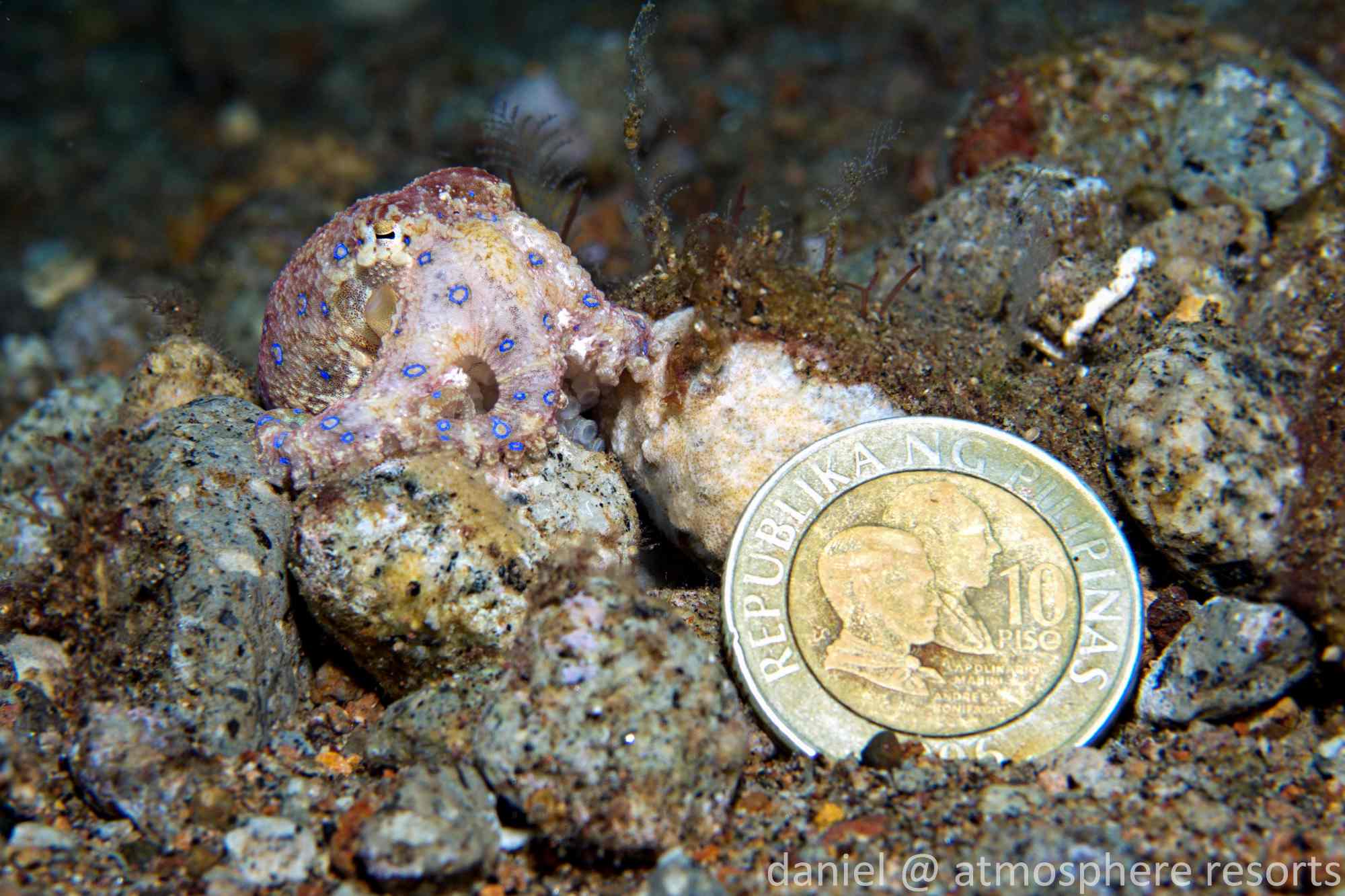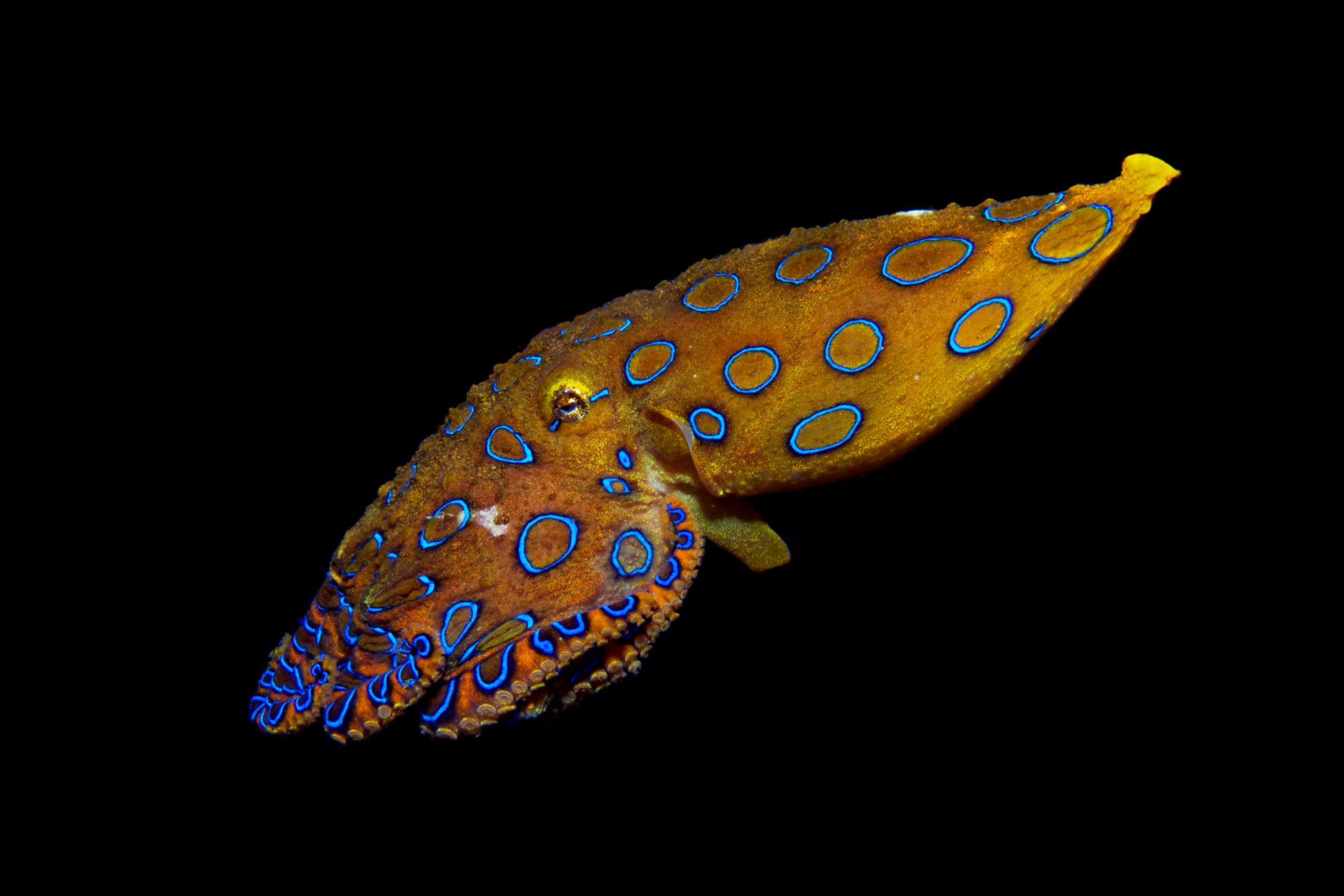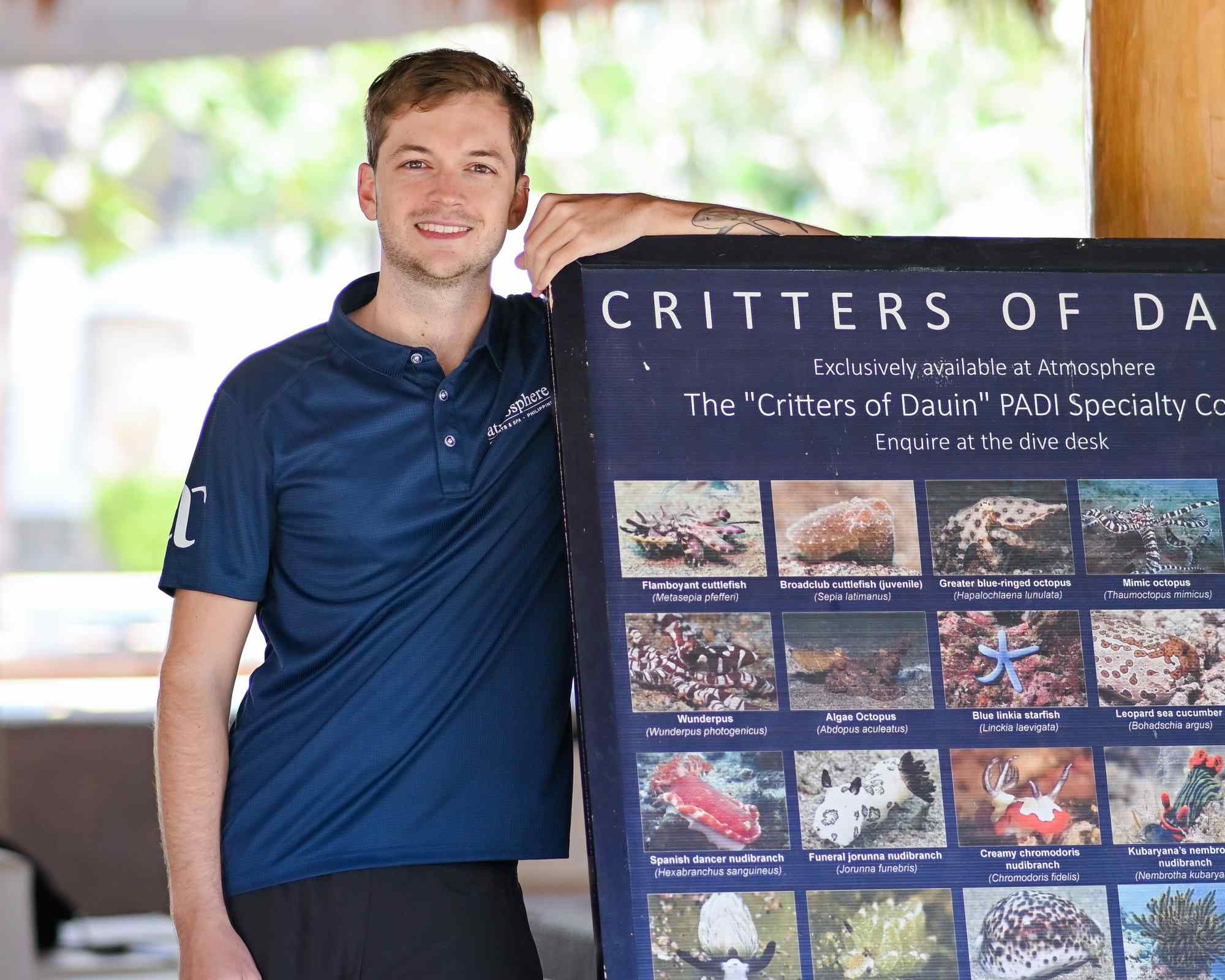Nestled within the vibrant waters of Dauin, Philippines, the blue-ringed octopus is undeniably a firm favourite of our guests here at Atmosphere. We love seeing how excited our divers get when seeing these beautiful and elusive creatures! You may have seen one yourself, but how much do you actually know about the blue-ringed octopus? Keep on reading to find out why these creatures are so highly sought-after.

Don’t get too close to these highly venomous creatures!
Blue-ringed octopuses are a group of highly venomous cephalopods. They are found in coral reefs and rocky areas in the Pacific and Indian Oceans. There may be around 10 species of blue-ringed octopus, but only four have been given scientific names: the greater blue-ringed octopus (Hapalochlaena lunulata); Southern blue-ringed octopus (Hapalochlaena maculosa); blue-lined octopus (Hapalochlaena fasciata); and Hapalochlaena nierstraszi, which has only been officially recorded twice. Here in Dauin you can encounter the smallest of the four species, the greater blue-ringed octopus, measures approximately 12 centimetres long including its arms.
Meet one of the deadliest creatures in Dauin, Philippines
These tiny cephalopods certainly pack a big punch. A bite from a blue-ring could kill up to 26 people in mere minutes! Produced by symbiotic bacteria in their salivary glands, the venom is tetrodotoxin – a neurotoxin also found in pufferfish, which is over over 1000 times more toxic than cyanide. Depending on the dose, the victim can develop numbness, difficulty in swallowing and muscle paralysis. Death is usually by respiratory failure due to the diaphragm becoming paralysed. While bites from blue-ringed octopuses are rare, it is always worth admiring them from a distance!

A tiny juvenile greater blue-ringed octopus!
Good luck finding these masters of camouflage!
Octopuses have thousands of chromatophores under their skin. These are specialised cells which allow them to change their colour in the blink of an eye. Blue-ringed octopuses can change the colour and texture of their skin in order to blend in with their surroundings. This enables them to mimic coral and rocks to avoid predators or sneak up on prey. They spend most of their time tucked away in crevices, emerging at night to hunt crustaceans and sometimes small fish.
Be hypnotised by their dazzling display of danger
Blue-ringed octopuses also have a specialised type of light-reflecting chromatophore called an iridophore. This is what gives the blue rings their iridescence. When threatened, blue-ringed octopuses use these cells in combination to quickly change colour and display their intense blue rings as a warning to potential predators. Up to 60 small, blue rings cover the body and flash at up to 3 flashes a second. The rapid flashing is created by muscles contracting and relaxing areas of skin around the rings.

Blue-ringed octopuses flash their blue rings in a dazzling display to deter predators
Take the Critters of Dauin specialty, unique to Atmosphere!
Want to learn more about the incredible critters we see here in Dauin? Then the PADI Critters of Dauin specialty is perfect for you! Created by our in-house marine biologist, this specialty is unique to Atmosphere. It lets you into the secrets our guides use to locate even the smallest and most cryptic of critters. For more information, check out our previous blog post about the PADI Critters of Dauin specialty here

Take the PADI Critters of Dauin specialty with me!
For bookings and enquiries about the PADI Critters of Dauin specialty, please email dive@atmosphereresorts.com
Want to know more about the incredible critters we see here along the Dauin coast and Apo Island? Check out the critters page on our website.






